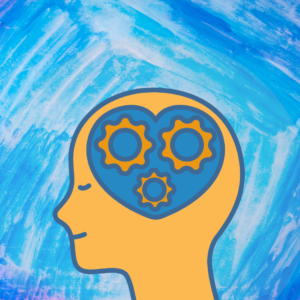 Childhood mental health concerns have been on the rise over the last 10 years but significantly increased since 2020. Stressors associated with the COVID-19 pandemic and racial inequality have only exacerbated underlying mental health concerns in our youngest patients. Leading experts from multiple medical-groups, including the American Academy of Child and Adolescent Psychiatry (AACAP), the American Academy of Pediatrics, and the Children’s Hospital Association have declared a national-emergency in child and adolescent mental and are urging for action.
Childhood mental health concerns have been on the rise over the last 10 years but significantly increased since 2020. Stressors associated with the COVID-19 pandemic and racial inequality have only exacerbated underlying mental health concerns in our youngest patients. Leading experts from multiple medical-groups, including the American Academy of Child and Adolescent Psychiatry (AACAP), the American Academy of Pediatrics, and the Children’s Hospital Association have declared a national-emergency in child and adolescent mental and are urging for action.
There is an immense need for change at the local and national levels to invest in resources for children’s mental health to make mental health treatment affordable and accessible to all. Support of models that integrate trauma-informed mental health treatment in various settings such as schools, primary care clinics, hospitals, and mental health clinics through accessible modalities such as on-site providers, options to adequately address acute needs, and telehealth are some of the action steps that are being emphasized.
As a mental health therapist and supervisor, I am feeling the effects of parents and caregivers seeking help in the midst of a crisis, especially as children are requiring a higher level of care for more acute mental health needs. Hospitals are reaching out for help connecting their youngest patients to ongoing mental health treatment following trips to the emergency room.
Mental health visits to the emergency department are on the rise. In fact, mental health emergencies for children ages 5 to 11 rose 24% and for children ages 12 to 17 rose 31% between March to October 2020, compared to rates in 2019.
Common themes of mental health concerns for children include depression, anxiety, social isolation, grief, fear, uncertainty, and coping with trauma. Suicidality is especially of concern and a common reason for crisis intervention. Girls 12-17 are especially at-risk as the Centers for Disease Control and Prevention (CDC) reported that emergency department visits for suspected suicide attempts increased by nearly 51% in early 2021 compared with the same period in 2019.
Many children are coping with the effects of cumulative traumas since the pandemic. While 140,000 children in the United States have lost a primary or secondary caregiver during COVID, the loss of a primary caretaker disproportionality impacted children of color. Data showed that Hispanic children were 2X more likely, Black children 2.4 X more likely, and Native American children 4.5X more likely than White children to lose a primary caregiver.
If you can relate to losing one or more significant caretakers in childhood, imagine what it feels like for a child who is already fearful, anxious, and/ or depressed during a time of heightened stress, trauma, and social isolation. Be on the lookout for signs that your child may be experiencing a mental health crisis.
If you have concerns that your child is no longer safe for themselves or others, call 911 or go to your nearest hospital emergency room.
Your mobile county crisis team or suicide prevention lifeline are both resources during times of crisis.
Mental health crisis phone numbers are listed by county.
National Suicide Prevention Lifeline: 800-273-TALK (8255).
If your child has not had an opportunity to talk to a therapist, consider taking a step to reach out now to get them some additional support. One thing that the pandemic has taught me is that we can all benefit from talking to a therapist, no matter what age you are.
Written By: Charlotte Johnson, MA, LPCC
We’re Here to help
Our wellness experts will be happy to take care of you. You can CLICK HERE to schedule an appointment now or call (612)223-8898.
Meet Clinicians
We’re united by our commitment to providing effective, relevant, and innovative mental health support at all stages of your journey. Click Here to find out more about who we are, where we come from, and how we live out CARE’s mission every day.
The professionals at CARE are actively collecting and creating resources to help with what you need. We’re Here for You.



